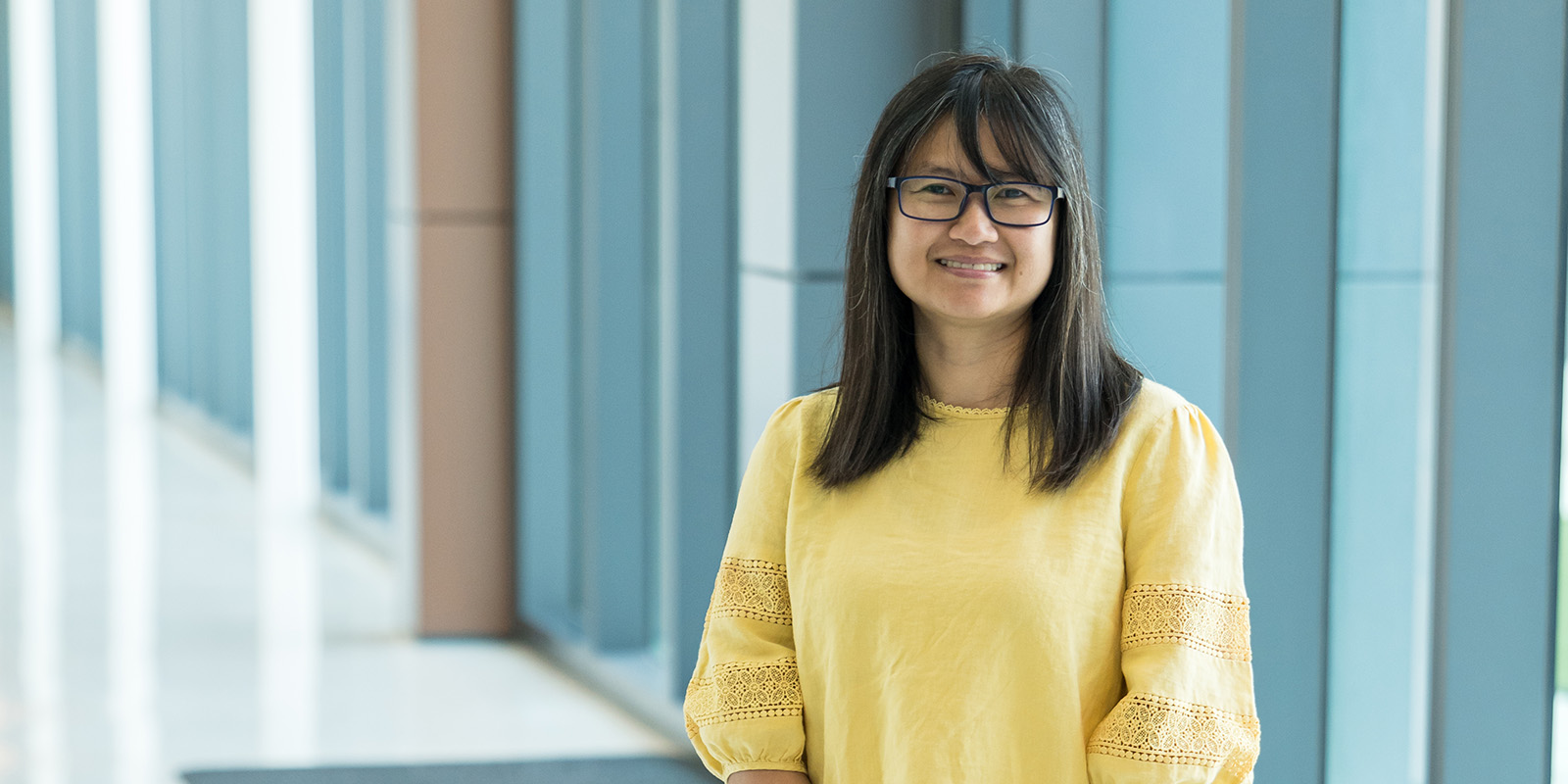Breadcrumb

________________________________________________
By Mary Caitlyn Rodriguez, MU Health Care
August 19, 2025
Wipawee “Joy” Winuthayanon didn't plan to leave the bedside.
While training to be a nurse in Thailand, Joy completed a midwifery rotation. She cared for women throughout their pregnancies—sometimes leading to joyful outcomes, other times to quiet heartbreak.
“I loved following patients through pregnancy and seeing their happy ending. But no one talks about the other side — the failures, the losses.”
Joy began to notice the questions that lingered after each shift — details that didn’t quite add up, outcomes that raised more uncertainty than resolution. She wanted to do more than care, she wanted to understand why things happened the way they did.
“It’s not that I didn’t care for patients — I did. But I thought I could do more. I wanted to find answers to the questions no one was asking.”
So she did what few are brave enough to do: start over.
She left nursing behind, moved to the United States and eventually earned a postdoc fellowship at the National Institute of Environmental Health Sciences in North Carolina. From there, she moved across the country to Washington State University, before being recruited to the University of Missouri. The opportunity to work across hospital and research settings made the decision easy.
“I wasn’t looking at Missouri at first. But when I came to visit and saw the resources and infrastructure, I went home and told my husband, ‘We have to move.’”
Now an associate professor in the Department of Obstetrics, Gynecology and Women’s Health, Joy leads a research team studying the biological forces shaping fertility, inflammation and contraception. Her questions are precise, but her motivations are deeply personal — shaped by what she saw and felt in her years as a nurse in Thailand.
Turning Experience into Answers
Joy remembers the women who returned again and again with pregnancies they didn’t want. Access wasn’t always the issue — the stigma was. Many of her patients were young, afraid to ask for contraception, or unsure how to navigate the judgment that might come with it.
That sparked her first question — how could she create safer, more discreet options that people could access on their own terms? That question led to her current work on a hormone-free contraceptive. The concept is simple but innovative: prevent sperm from moving by keeping semen in its original, gelatinous state. Delivered as a vaginal gel or film, it could give people the kind of autonomy she didn’t see enough of in her early career.
“These questions aren’t just scientific — they’re about access. They’re about giving people real choices.”
Joy also remembers how hard it was for women to talk about infertility — how often it went unmentioned, even when it was clearly present. Overtime, one question stuck with her: Why do some pregnancies fail before they even begin?
Her lab recently studied what happens in the fallopian tubes when progesterone doesn’t work as it’s supposed to. In mouse models, they found that a lack of this hormone’s action can trigger inflammation that disrupts embryo development.
“Some inflammation is normal. It’s required for ovulation and implantation. But too much, at the wrong time, can be harmful.”
Her research showed that when inflammation was suppressed — at the right time — embryo growth improved. That finding could eventually shift how some fertility challenges are understood and treated.
These projects are grounded in science, but their roots are personal. They come from what she saw and heard caring for patients, long before she ever wore a lab coat.
“When I worked in the clinic, I saw how certain stigmas affected people — how hard it was for people to ask questions. That stayed with me.”
Infertility now affects 1 in 5 women in the U.S., yet it remains something people hesitate to speak about.
“It’s more common than people realize... And it’s not a failure. It’s a medical condition. People deserve answers.”
That mindset is woven through her work. She’s not just trying to understand how the body works — she’s trying to create options that didn’t exist before. And she’s doing it while mentoring students, managing a lab, writing grants and raising two kids. Her office door stays open, and each week she shares her schedule so students know when she’s available. They know when she’s in meetings, when she’s writing, and when it’s a good time to stop in and talk through a tough result.
Not all of the work leads to breakthroughs. She’s spent years building models that showed no difference at all. But she doesn’t see that as failure — just another step forward.
“Science is hard. Most experiments don’t work. But seeing students grow — and seeing the questions we ask make an impact — that’s what keeps me going.”